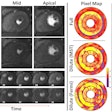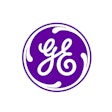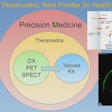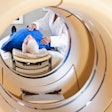GE Healthcare is shining the spotlight on its new Discovery MI and NM/CT 670 CZT systems at this week's Society of Nuclear Medicine and Molecular Imaging (SNMMI) meeting in San Diego.
Discovery MI is a PET/CT system that features GE's LightBurst digital detector and the firm's time-of-flight and Q.Clear image reconstruction technology, according to the vendor. GE believes the combination yields higher resolution and enables improved detection of small lesions.
Discovery MI also includes low-yield tracer capability with protocols that can lower dose by up to 50%, according to the company. GE said that the new system's capabilities could also be used to support quantitative brain research.
GE is highlighting the benefits of the next generation of its LightBurst detector, which adds significant improvements in volumetric resolution and spatial resolution, according to the firm. Discovery MI also utilizes GE's ASIR-V adaptive statistical iterative reconstruction (ASIR) techniques as well as the firm's metal artifact reduction software.
Discovery MI is currently pending 510(k) clearance by the U.S. Food and Drug Administration (FDA).
SNMMI 2016 also marks the formal launch of GE's new Discovery NM/CT 670 CZT scanner, a general-purpose SPECT/CT imaging system equipped with a new digital detector that uses cadmium zinc telluride (CZT) technology. The CZT detector directly converts photons into digital signals.
CZT has previously been used only in organ-dedicated gamma cameras, but Discovery NM/CT 670 allows physicians to image every organ and even to perform whole-body exams, according to the vendor.
GE announced in May that it had completed the first North American installation of Discovery NM/CT 670 at Barnes-Jewish Hospital in St. Louis.




















